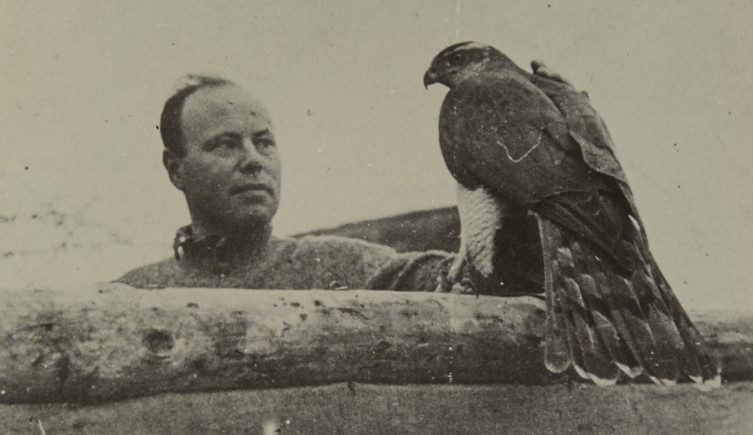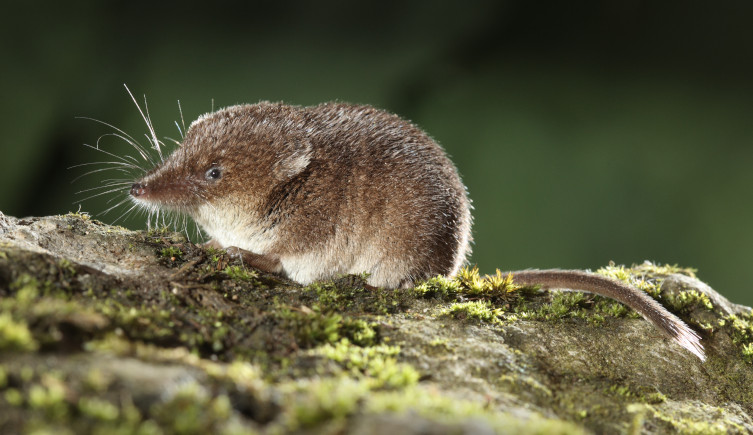Some moles can shrink themselves by over a tenth to save energy during the winter.
A new study shows the tunnelling mammals are among a handful of mammals capable of this unusual process, known as Dehnel's phenomenon.

The seasonal shrinking known as Dehnel's phenomenon may relate to cold temperatures, rather than a lack of resources. Image © Herbie Love/Shutterstock
Some moles can shrink themselves by over a tenth to save energy during the winter.
A new study shows the tunnelling mammals are among a handful of mammals capable of this unusual process, known as Dehnel's phenomenon.
European moles can ride out harsh winters by becoming up to 11% smaller.
A team of German researchers found that the species Talpa europaea is one of a handful that seasonally shrink their bones and organs during a process known as Dehnel's phenomenon. While this periodic change has been known of for more than 70 years, the exact reasons behind it have remained unclear.
The scientists have concluded that the phenomenon is a response to cold, wintry temperatures, rather than a lack of food. By shrinking, the animals are believed to have significant energy savings that allow them to endure the extreme cold.
Dr Dina Dechmann, the senior author of the research, says, 'Dehnel's phenomenon offers a unique opportunity to study brain size changes within individuals, and though the common shrew is the classical model, demonstrating it in other animals like the European mole has huge implications.'
'A shrinking and regrowing skull, alongside the brain and other tissues, offer significant possibilities for future applied research.'
The findings of the study were published in Royal Society Open Science.

The seasonal shrinking known as Dehnel's phenomenon may relate to cold temperatures, rather than a lack of resources. Image © Gabriel Brzęk/RCIN, licensed under Public Domain via RCIN.
Dehnel's phenomenon is named after Professor August Dehnel, who observed the process taking place in Sorex shrews living in his native Poland in 1949. He saw that the skull size of these animals varied by the season, getting smaller during the winter and rebounding afterwards.
The phenomenon has since been seen in a number of small mammals globally, including stoats and weasels. It appears to be limited to animals which are very energetic and do not hibernate during the winter, meaning any energy savings would be beneficial to these mammals.
While the reduction in size saves energy, it comes with a trade-off. Dina says that the phenomenon has previously been shown to affect the cognitive behaviour of shrews.
These small mammals show some of the most extreme changes, with the skull shrinking by as much as a fifth as the animal approaches its first winter. The skull never regains its full size in shrews but can grow back even larger in other mammals.
The extreme changes in body size have drawn attention in recent years as offering possible insights into how the development of the skeleton and other tissues can be radically altered after an animal becomes fully grown.
There are hopes this could help provide new medical treatments for conditions that affect the growth and health of human bones, as well as other organs.
'We have colleagues who are interested in using findings about Dehnel's to find ways to investigate treatments for neurodegenerative disease and osteoporosis among other things,' Dina says.
'By providing the phenomenon with a broader taxonomic footing, this research is more likely to yield results, and ultimately maybe even for us.'
While Dehnel's phenomenon has been studied mostly in shrews, they are not entirely well-suited as a model organism. They live on average for 13 months so only ever go through the process once, which makes it difficult to assess how it is affected by changing environmental conditions.
The scientists behind the current study instead turned to Talpa moles, which live for around three years on average, to see if they could provide new insights into the phenomenon.

Shrew skulls can shrink by as much as 20% during winter. Image © Erni/Shutterstock
Researchers investigated two species of mole, which preliminary studies suggested may shrink seasonally. These were the European mole, found across the continent from Britain to parts of Russia, and the Spanish mole, which is found in Spain and Portugal.
As both moles live in different climates, the researchers predicted that while European moles would become smaller during winter when conditions were most severe, Spanish moles would instead become smaller in the summer as a result of the extreme heat.
The skulls of moles held in museum collections in Spain and Czechia, formerly the Czech Republic, were measured and tied to the time of year they were collected, which allowed researchers to observe how body sizes changed over time.
They found that the European mole's head shrinks by 11% until November in their first year of life, and regrows by 4% in the spring and summer. A similar pattern was observed the following year, though to a much smaller degree.
The size of the Spanish mole's skull, however, did not change significantly throughout the year, even when resources were more scarce. While resources may play some role, the scientists concluded that Dehnel's phenomenon is linked to the presence of cold temperatures.
They also concluded that the phenomenon occurs independently of the moles' biological development, as moles of different ages showed similar changes when they experienced cold temperatures.
The scientists hope to continue their research by assessing Dehnel's phenomenon in living animals, as well as investigating how it evolved.
'I want to work with living moles now to examine how the brain and its regions change over time as part of a recapture study,' Dina explains. 'I will also continue to work with colleagues working on the genomics, metabolomics and proteomics to compare moles to shrews.'
'That said, I still want to really understand in more detail how the behaviour and energetics of the moles are affected by this phenomenon, and how this will be affected by climate change.'

Just how weird can the natural world be?
Don't miss a thing
Receive email updates about our news, science, exhibitions, events, products, services and fundraising activities. We may occasionally include third-party content from our corporate partners and other museums. We will not share your personal details with these third parties. You must be over the age of 13. Privacy notice.
Follow us on social media